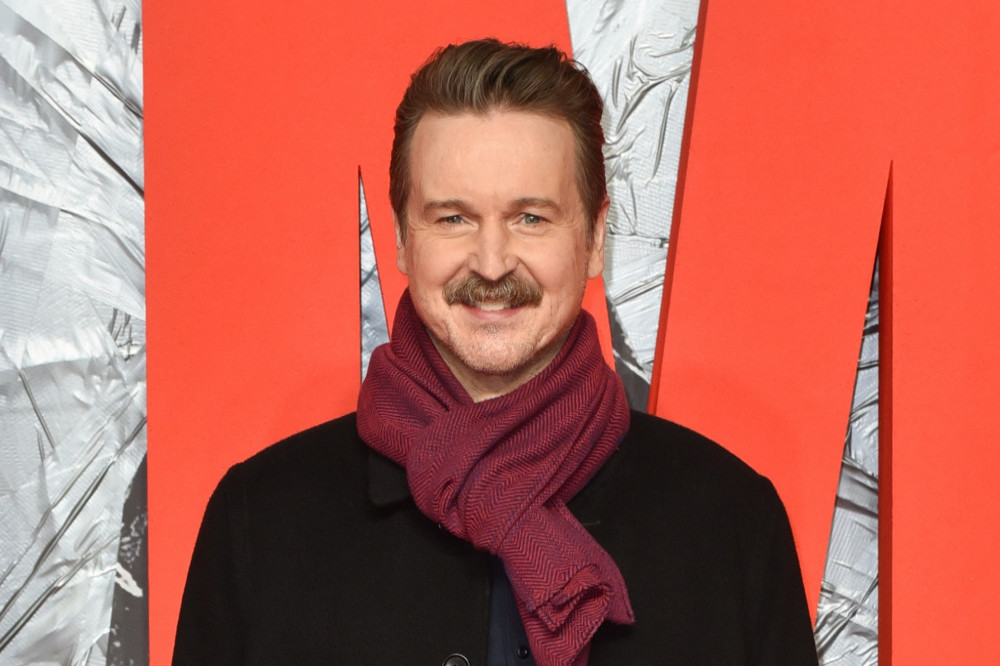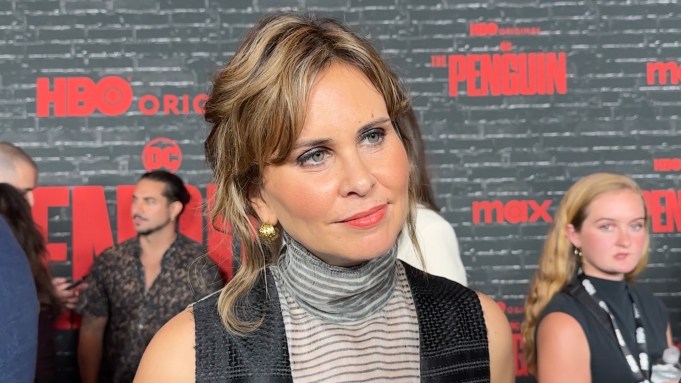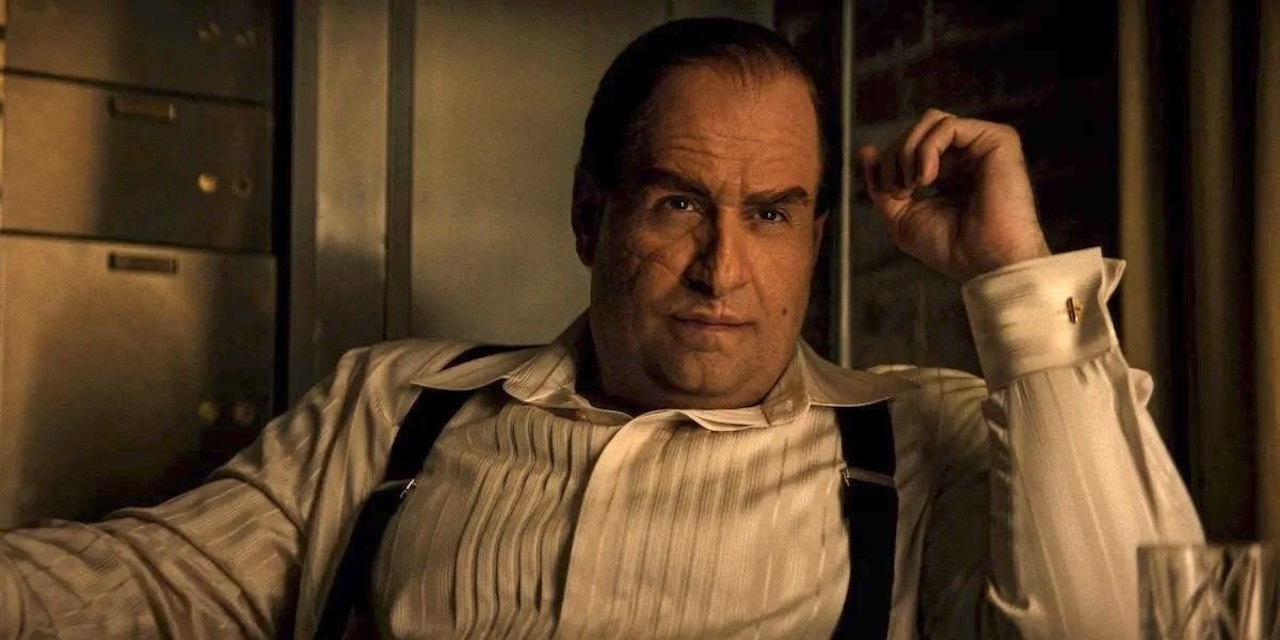Every film and television maker appreciates that it takes an army of creative to make something the audience will love. Even with a seemingly low-risk formula of pre-existing IP, a stellar cast and a host of hits, success isn’t assured.
We spoke with executive producer Dylan Clark who helped bring The Penguin to our screens. Clark co-produced, The Batman in 2022, the precursor to the television series The Penguin. He also co-produced several movies in the Planet Of The Apes franchise.
Clark grew up in an industry family and has always loved films and television shows. “I grew up at a time when the first cable, the first paid cable subscription service in Los Angeles was called the Z channel and it was a portal into some of the best movie programming you could ever watch,” he recalls. Many famous filmmakers made their mark on the Z channel including Quentin Tarantino, Alexander Payne, and Jim Jarmusch.

Dylan Clark. Photo courtesy of Getty Images
Some producers are more focused on securing finance for a project while others are more creative. Dylan Clark describes himself as a “career creative producer” and looks for story and characters before attaching himself to a project. Quite often, the company that finances a film or television show, also indicates its creative vision. This approach is more attractive to Clark than the package itself.
I have to find the creative connection to something before I want to work on it and explore it
“I like stories that have a real emotional truth, but often are pushed into either a grounded sci-fi or an elevated genre. I like stories about the human condition wrapped up into entertainment packages,” he continues.
Do We Need More Spinoffs, Sequels, Crossovers and Franchises?
These terms refer to material derived from a source and referenced in varying degrees in derivative content. The idea is that built-in audiences of the original material will also be drawn to the new material.
We asked Clark how he navigates these business terms and if they’re helpful to screenwriters.
“For me, it has to be something in the character that’s worth exploring because there might be a new angle on a story. Can audiences create a conversation around an experience that a character is going through?” In considering how The Penguin might play out, he looked at Scarface as a template to inform Oz Cobb’s character arc.
Scarface is a seminal film that describes the American immigrant experience in terms of its distribution of opportunity and wealth. Scarface is based on Al Capone and was initially made in the 1930s and again in the 1980s. Dylan Clark is giving it new treatment once again. “It’s not a remake. It’s a new interpretation of Scarface as it relates to today. What is the immigrant story of coming into an American city in search for the American dream today?”
Al Capone is an iconic character that stands the test of time. He is constantly in our culture
Why Are DC Characters So Enduring?
Gotham represents a city that’s perpetually broken and not getting any better. Everyone can relate to a place like that. “Gotham is a mirror to the things we’re feeling today wherever you live,” mentions Clark.
Big cities provide the promise of economic and social success, but there are costs associated in doing so. “You have to endure a lot of pain and suffering and there’s corruption and crime and all that.”
Characters like Oz Cobb need to feel like characters we see today. “We really wanted to ground this story and examine what these people have done in our society today, good and bad.”
Watching villains transform into super villains is also captivating to audiences because they can follow their path.
“Watching a monster be monstrous isn’t that interesting. Watching a character who’s driven by their psychological and emotional needs, and then making choices along the way that are flawed and dangerous against humanity and becoming a monster, is an interesting thing that we like to watch,” notes Clark.
Audiences also enjoy watching gangsters acting on their uncontrolled impulses because, although they empthasize with them, viewers can control their impulses despite the provocations. “There’s something satisfying and titillating about that.” There’s also a modicum of our rebellious streak secretly wanting to break societal norms.
Dylan Clark & Screenwriter Matt Reeves
Dylan Clark met Matt Reeves during production of Planet Of The Apes. “He really connected to what we did in the movie and he was a big fan of the original television series that my grandfather produced. He’s a very thorough, well-researched, serious filmmaker. And he really connects emotionally to characters.”
“Matt’s looking to find the empathy in all these characters and then watching them in a situation make bad choices and then become bad people along the way.”

Matt Reeves. Photo courtesy of Warner Bros.
This led to them being offered a Batman movie. Clark and Reeves were initially daunted by the magnitude of this request by finally stepped up to the task to collaborate on The Batman.
“Matt picked year two because Batman hadn’t quite perfected being Batman and he was driven by things that were less than heroic. This idea of vengeance, what does that actually look like when you’re a thirty year old guy?”
They deliberately avoid a routine origin story and focus on the events that happened to Bruce Wayne that fuelled his vengeance drive.
The Batman Movie
Dylan Clark pondered how an eighty year history of Batman and the characters in his world could be contemporized. Christopher Nolan made three Batman films and Zack Snyder made a Batman/ Superman mashup movie to keep the DC universe moving forward.
Clark concedes that it was very difficult for him and screenwriter Matt Reeves to find new creative opportunities for Bruce Wayne/ Batman. That is why The Batman and The Penguin took so long to write.
Is there a way to look at this character and offer up a new point of view, a new angle, a new experience and, a deeper exploration psychologically inside this character?
In doing so, they made The Batman and created some new characters in the process. These include the rogue gallery, the marquee bad buys that populate this world. In this case, it’s The Riddler.
“They are created in reaction to Batman showing up. Batman creates his bad guys that he has to go up against. He’s part of the problem.” A superhero can only be one if there is a danger to address.

Bruce Wayne/ Batman (Robert Pattinson) & Zoë Kravitz (Selena Kyle). Photo courtesy of Warner Bros.
In The Batman, Clark and Reeves focused on Bruce’s character and realized they could make standalone movies and TV shows around these marquee villains – such as Oz Cobb/ Penguin.
Colin Farrell completely inhabited The Penguin character in The Batman despite him only having six scenes in the movie. Matt Reeves and Dylan Clark believed the character deserved a deeper exploration in a television series. There was a justification of why the show needed to happen.
The Penguin Television Series
Matt Reeves and Dylan Clark explored Oz Cobb/ Penguin through their “rogue character gallery” lens with a bit more “firepower.”
The Penguin could have been a movie or a television series due to the richness of his character. “In the comic book canon, he is known as the kingpin in the city of Gotham. He becomes the head of the crime syndicate inside this broken city. Matt loosely talked about that as sort of a shape for the series.” Then they combined the idea of the kingpin with their Scarface rise to power story.”
Once HBO signed on, “we had to find a writer that understood the ways we were telling our stories from the inside out emotionally, and getting inside these characters. What are their hopes, their dreams and their fears? What drives these characters? And then, what might happen along the way that could get them closer to kingpin status.”
Lauren LeFranc perfectly fit the bill. She understood Oz Cobb’s psychology and the tone and style of the show.

Lauren LeFranc. Photo courtesy of HBO
All this happened while Dylan Clark and Matt Reeves were working on a sequel to The Batman. There was some overlap between the two storylines, some of which had to be preserved for the movie. That was their starting point.
The Penguin built up to the crescendo of Oz Cobb always wanting to be revered, especially in the eyes of his mother.
As the season progresses, audiences realize “the malignancy that is attached to his narcissism. It’s pretty sociopathic, villainous, and horrible. The choices this character makes are brutal.”
Clark and Reeves showed The Penguin and The Batman to their filmmaker friends for feedback before they showed them to Warner Bros. for feedback.
“They really kick us hard and were brutally honest about things that weren’t working, or working really well and wished they had more time to spend with.”
“You need to create a safe group where you get feedback that’s going to allow you to be able to achieve the thing you set out to, hopefully even better. You can’t do it in a vacuum,” advises Clark.
Dylan Clark expresses the challenges facing the industry. That’s the nature of the business. There will always be an audience for good stories – “a spectacle wrapped around an emotional core of a character you invest in. Then you can add a conceptual element that hasn’t been seen before.”
